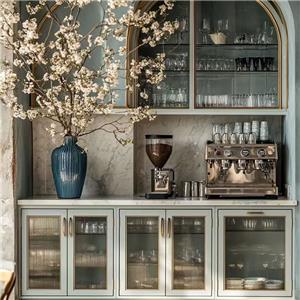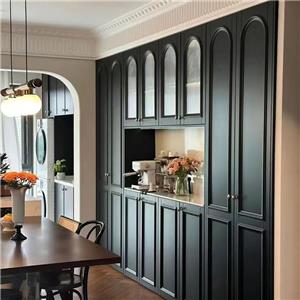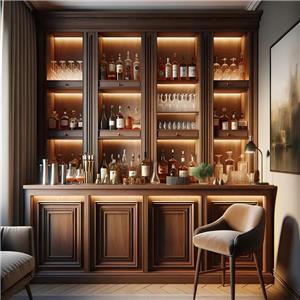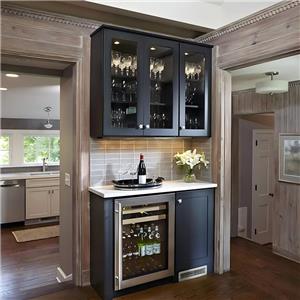Introducción a las especies de madera importadas para gabinetes de madera maciza
Acabado de superficie lisa:
La madera proporciona un acabado superficial liso después del procesamiento.Buenas propiedades de adhesión y recubrimiento: Demuestra buena adherencia para pegar y tiene excelentes propiedades de recubrimiento.
Resistencia a la corrosión:
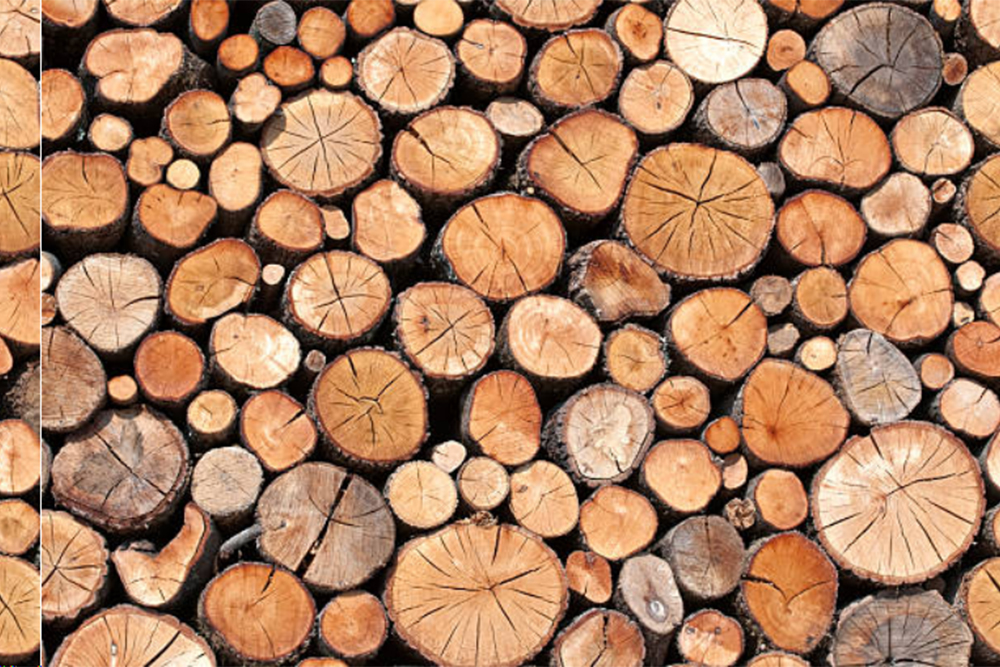
El palo de rosa es resistente a la corrosión, lo que garantiza la longevidad.
Resistencia a la fricción:
La madera es resistente a la fricción, manteniendo su calidad en el tiempo.
Estructura general robusta:
Contribuye a una estructura general robusta y los patrones de tallado intrincados se ejecutan con precisión.
Acabado de pintura duradero:
El palo de rosa mantiene un acabado de pintura duradero, evitando que se pele o astille fácilmente.
Resistencia a los cambios de color:
Es menos propenso a cambios de color, conservando su atractivo estético.
Alto valor coleccionable:
Debido a sus cualidades únicas y su escasez, el palo de rosa tiene un alto valor coleccionable.
Estas características hacen del palo de rosa una opción preferida para diversas aplicaciones, combinando beneficios tanto funcionales como estéticos.
Odor: Burmese teak continues to emit a natural and pure fragrance, acting as a natural insect repellent. This unique aroma provides insect and termite resistance, a feature not present in other tree species. Processed teak may have a subtle odor initially due to surface coatings, but over time, the fragrance permeates the air, creating a refreshing and natural atmosphere.
Touch: The surface of Burmese teak is exceptionally smooth and feels delicate, as if it has been soaked in oil. When freshly cut, rubbing it with hands releases an oily texture, resulting in a progressively smoother feel.
Rich in Iron and Oils - Acts as a Snake, Insect, Rodent, and Ant Repellent.
These characteristics contribute to the high value of Burmese teak wood, making it a prized choice for various applications.
Congo Sapele Wood:
Sapele, also known as Red Shadow Wood or African Mahogany, is one of the world's three precious woods and is considered a superior material for furniture and doors. It is primarily imported due to the absence of domestic sources, making it relatively expensive. Sapele is resistant to corrosion, has high strength, and originates from tropical regions in Africa. Its advantages include fine and uniform patterns, a glossy finish when clear-coated, a softer and more subdued appearance with a matte finish, high wood hardness, strong stability, clear grain, a sparkling and three-dimensional texture, providing a luxurious and elegant feel. It is considered one of the most fashionable wood materials for doors today.
Sapele has a fine and dense texture, making it resistant to water absorption. Doors made from Sapele exhibit excellent moisture resistance and, to some extent, offer good soundproofing effects. To enhance protection, a layer of clear coating is applied to the surface, preserving aesthetics while increasing the door's resistance to corrosion and strength. Known for its good flexibility, Sapele allows for easy shaping, contributing to the creation of various door styles in the market, including European-style doors and classical Chinese doors. These doors, with their high quality, cater to consumers with noble status, and some doors can be customized with different carvings, adding a finishing touch.
Brazilian Rosewood (Brazilian Rosewood):
In the market, "Antiaris Toxicaria" is commonly referred to as "Brazilian Rosewood," although it doesn't exclusively come from Brazil; its primary sources include Gabon and Cameroon in Africa. The terms "Brazilian Rosewood" and "Ba Hua" are colloquial names used in the market. Brazilian Rosewood is widely used and regarded as a precious wood due to the attractive name "Rosewood." While it does not belong to the true rosewood family, it possesses excellent properties and distinctive grain patterns, making it relatively expensive.
The heartwood of Brazilian Rosewood is reddish-brown with dark stripes, displaying a glossy surface and no distinctive odor. It is hard, heavy, and has high strength, forming unique and beautiful patterns through its inherent stripes and interlocking grain. This contributes to its high decorative value.
Due to the scarcity of Rosewood and the high quality of products made from it, the prices tend to be higher. The superior quality of Brazilian Rosewood, apart from market factors, makes it an excellent wood species with high preservation value.
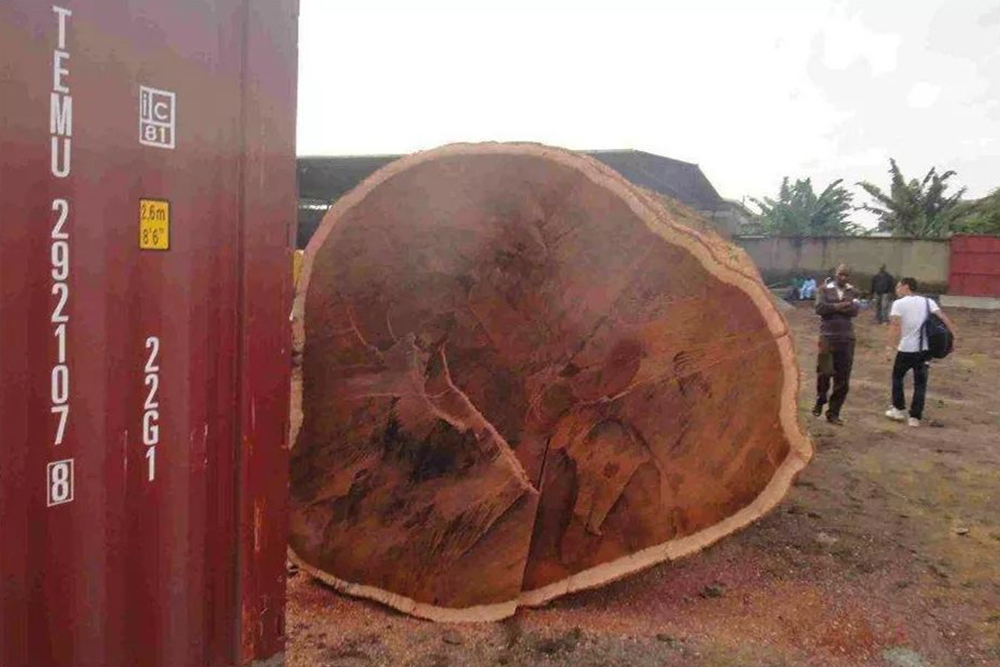
Advantages: Rosewood has several notable advantages, including:
Low Susceptibility to Drying: Rosewood is less prone to drying, and there is a significant difference in shrinkage between the sapwood and heartwood.
Corrosion and Friction Resistance: It exhibits resistance to corrosion and is highly resistant to friction.
Strong Nail Holding Capability: Rosewood has a strong grip for nails, ensuring durability in construction.
Excellent Mechanical Strength: It possesses impressive mechanical strength, contributing to the overall robustness of structures.
Ease of Carving and Processing: Rosewood is easily carved and processed, allowing for intricate designs and smooth surfaces.
Smooth Surface Finish: The wood provides a smooth surface finish after processing.
Good Adhesion and Coating Properties: It demonstrates good adhesion for gluing and has excellent coating properties.
Corrosion Resistance: Rosewood is resistant to corrosion, ensuring longevity.
Friction Resistance: The wood is resistant to friction, maintaining its quality over time.
Sturdy Overall Structure: It contributes to a sturdy overall structure, and intricate carving patterns are executed with precision.
Durable Paint Finish: Rosewood maintains a durable paint finish, preventing easy peeling or chipping.
Resistance to Color Changes: It is less prone to color changes, preserving its aesthetic appeal.
High Collectible Value: Due to its unique qualities and scarcity, rosewood holds high collectible value.
These characteristics make rosewood a preferred choice for various applications, combining both functional and aesthetic benefits.

